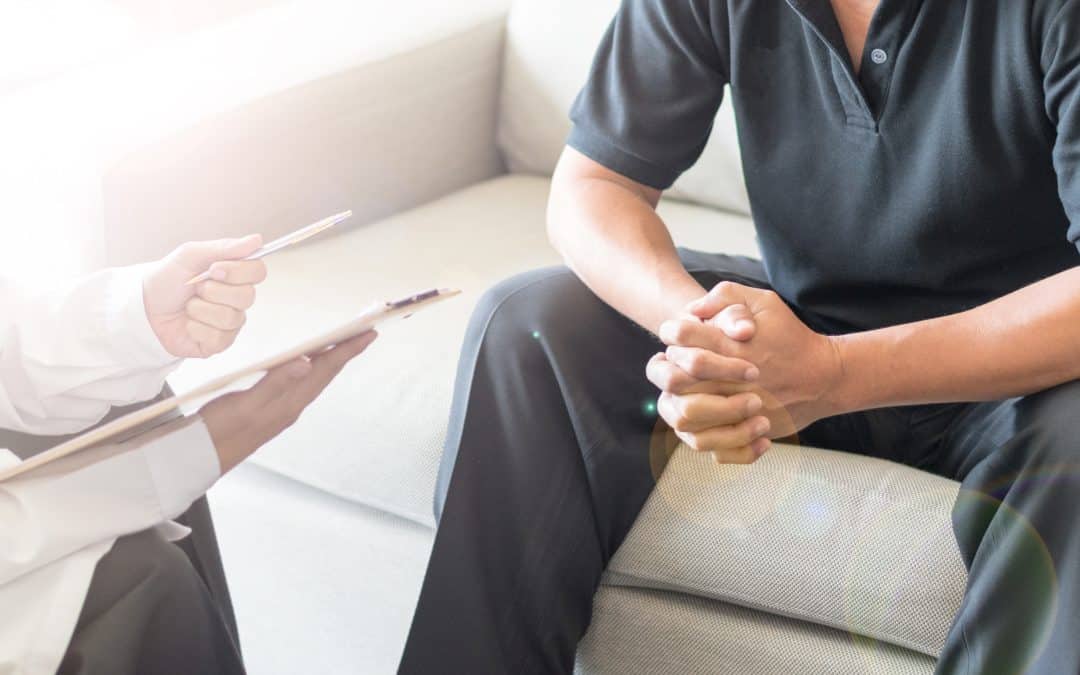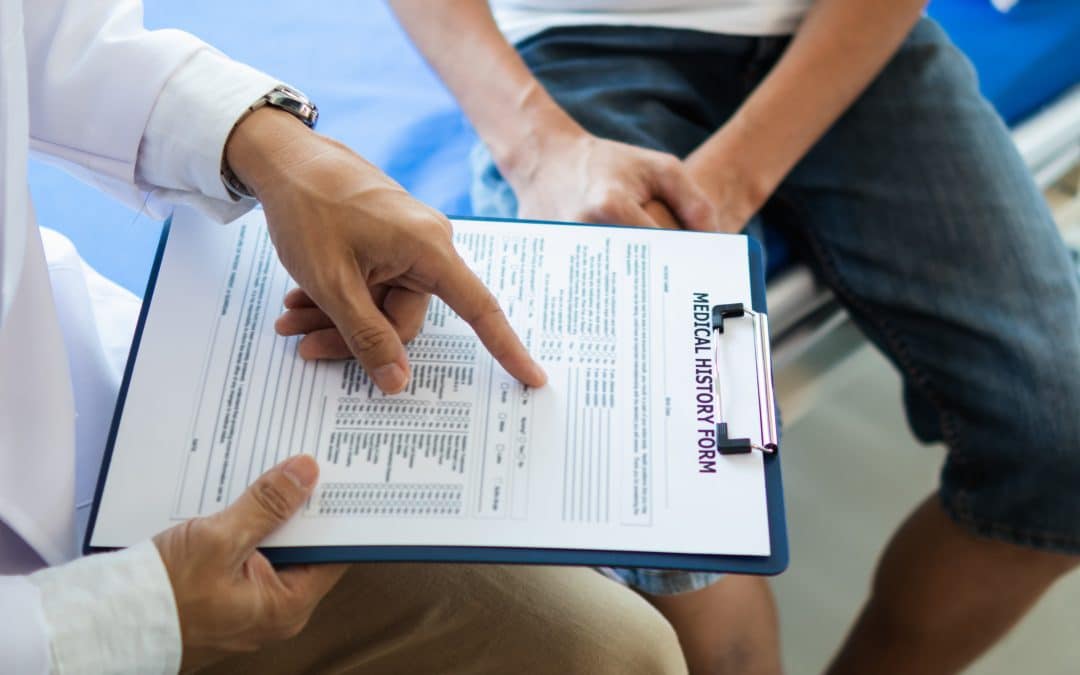Painful Ejaculation in Florida
Insights and Solutions
Beyond Discomfort
The Personal Struggle with Painful Ejaculation
Every man anticipates pleasure during the culmination of intimate moments, expecting the surge of euphoria accompanying climax. But for some men, this moment of pleasure is overshadowed by sharp pain or aching discomfort.
The anticipated joy turns into a dreaded experience, causing confusion, anxiety, and even fear. The implications of painful ejaculation stretch far beyond the physical. Intimacy can become fraught with apprehension, eroding self-confidence and straining relationships.
Many men grapple silently, hesitant to discuss such a private concern, even with healthcare professionals. But understanding and addressing this condition can pave the way back to fulfilling intimacy.
Painful ejaculation, while deeply personal and often challenging to discuss, is a genuine medical concern deserving attention, understanding, and compassionate care. No man should endure it in silence or consider it an inevitable fate.
With the right information, professional guidance, and supportive care, a path to relief and restored pleasure in intimacy is entirely possible. If you or someone you know is experiencing these symptoms, remember that you’re not alone, and help is available.
What is Painful Ejaculation?
Painful ejaculation, medically known as “dysorgasmia” or “odynorgasmia,” is a condition where a man experiences pain or discomfort during or immediately following ejaculation.
This pain might be felt in the penis, testicles, lower abdomen, or even the lower back. It can be a sporadic occurrence or a persistent issue, and its intensity can vary from mild discomfort to severe pain.
Symptoms of Erectile Dysfunction
To navigate the challenge of painful ejaculation, it’s essential to recognize its symptoms.
These can include:
- Localized Pain: Pain or discomfort in the penis or testicles during or after ejaculation.
- Abdominal or Lower Back Pain: Some men experience pain in the lower abdomen or back associated with ejaculation.
- Pain Duration: The pain can be fleeting, lasting only a few moments, or it can linger for hours after ejaculation.
- Consistent or Intermittent Pain: For some, every ejaculation is painful, while others experience pain sporadically.
- Associated Symptoms: In some cases, painful ejaculation may be accompanied by other symptoms such as blood in the semen, reduced ejaculate volume, or difficulty achieving an erection.
Functional and Regenerative Medicine Perspective on Painful Ejaculation Causes
From a functional and regenerative medicine perspective, painful ejaculation is approached with an emphasis on root causes and holistic healing. This approach delves deeper into interconnected systems, underlying conditions, and the body’s inherent healing mechanisms. Here’s a breakdown of painful ejaculation causes from this standpoint:
Inflammatory Conditions
Prostatitis: Inflammation of the prostate gland can lead to painful ejaculation. Functional medicine might explore the underlying causes of prostatitis, such as bacterial infections, chronic pelvic pain syndrome, or autoimmune reactions.
Diet and Inflammation: Diets high in inflammatory foods might exacerbate conditions that cause painful ejaculation. A holistic approach may involve dietary changes to reduce inflammation.
Hormonal Imbalances
Hormonal fluctuations, especially a decline in testosterone, might be linked to painful ejaculation. Functional medicine seeks to balance hormones naturally, often through diet, supplements, and lifestyle changes.
Nervous System and Structural Issues
Conditions affecting the pelvic nerves or structures, such as pelvic floor muscle dysfunction, can be a cause. Regenerative treatments, like physical therapy or therapies to improve nerve health and tissue regeneration, may be explored.
Gut Health and Infections
Chronic infections, including those stemming from an imbalanced gut microbiome, can indirectly lead to conditions causing painful ejaculation. Functional medicine often prioritizes gut health and addressing hidden infections.
Toxins and Environmental Factors
Exposure to certain toxins or environmental factors can lead to systemic issues or directly impact the reproductive system. A detoxification approach might be considered to reduce the body’s toxin burden.
Emotional and Psychological Factors
Chronic stress, unresolved trauma, or psychological factors can manifest as physical symptoms, including painful ejaculation. Techniques like mindfulness, biofeedback, and counseling can be integrated into a holistic treatment approach.
Tissue Health and Regeneration
From a regenerative medicine perspective, ensuring the health of the reproductive tissues is paramount. Treatments like PRP (platelet-rich plasma) injections might be explored to promote tissue healing and regeneration in the affected areas.
Circulatory and Vascular Health
Poor blood flow to the reproductive organs, possibly due to conditions like atherosclerosis, can contribute to painful ejaculation. Functional medicine might recommend therapies to improve vascular health, possibly including supplements, dietary changes, or specific exercises.
Conclusion
While traditional medicine might address painful ejaculation with pain relief or antibiotics (especially if prostatitis is diagnosed), functional and regenerative medicine goes beyond symptom management. By exploring underlying causes and using the body’s natural healing mechanisms, this approach offers a comprehensive strategy to address the root causes of painful ejaculation and potentially restore optimal reproductive health.
Functional and Regenerative Medicine
vs. Traditional Urology Care
Painful ejaculation, though not frequently discussed, is a condition that many men grapple with, often in silence. The approach to its resolution can be vastly different depending on whether one turns to traditional urology or explores the realms of functional and regenerative medicine. Let’s examine the contrasts between these two paradigms.
Traditional Urology Care:
- Symptom-based Approach: Traditional urology often zeroes in on the evident symptoms. Medications, like pain relievers or antibiotics, might be prescribed based on the presenting signs.
- Diagnostic Tests: Traditional diagnostic methods, such as prostate exams, urine tests, or ultrasounds, aim to find any anatomical or infectious culprits.
- Interventional Procedures: If an underlying cause is detected, like an obstruction or an enlarged prostate, procedures or surgeries might be recommended.
- Standardized Protocols: Treatment approaches in conventional urology tend to follow established protocols for identified conditions.
Functional and Regenerative Medicine:
- Holistic Approach: Rather than just addressing the symptom, functional medicine delves deep into understanding the root cause. The aim is to treat the underlying issue, not just alleviate the symptom.
- Personalized Care: Recognizing that every individual is unique, treatments are tailored based on one’s specific health history, lifestyle, and other factors.
- Broadened Diagnostic Lens: Beyond just traditional tests, functional medicine might evaluate hormone levels, gut health, dietary habits, and even psychological factors that could contribute to painful ejaculation.
- Anti-inflammatory Strategies: Recognizing that systemic inflammation can be a significant player, dietary modifications, nutritional supplements, and other strategies might be employed to reduce inflammation.
- Regenerative Techniques: This involves harnessing the body’s ability to repair and rejuvenate itself. Techniques like stem cell therapies, PRP injections, or other regenerative treatments might be considered to address tissue or nerve damage that could be causing pain.
- Mind-Body Connection: Recognizing the profound connection between emotional health and physical symptoms, functional medicine might incorporate therapies like counseling, meditation, or stress-reducing techniques as part of a comprehensive treatment plan.
Functional Medicine Tools:
- Comprehensive assessment to understand the patient’s entire health picture including specialty labs.
- Dietary and lifestyle changes tailored to the patient’s lab results.
- Use of natural supplements to target inflammation and promote healing.
- Stress management and physical therapies.
- Sleep optimization and restoration
- Personalized treatment plans that evolve with the patient’s progress.
- IV Nutrient/Ozone/UBI “TRIFECTA” Therapy
- EBOO, an oxygenation and ozonation process enhances the body’s immune response, reduces inflammation, and promote healing.
- Hormone replacement therapy (TRT)
- Nutritional therapy to optimize cellular health
- Detoxification to rid the body of potential carcinogens
- Stress management, as chronic stress can suppress the immune system
- Methylene Blue for urinary tract and prostatitis acts as a mild antiseptic, reducing bacterial activity and inflammation in the urinary tract. And its anti-inflammatory effects aid in alleviating symptoms of prostatitis
Regenerative Medicine Tools:
- Ozone injections to promote healing directly in the prostate tissue.
- PEMF (Pulsed Electromagnetic Field Therapy) to enhance healing and reduce inflammation.
- Neural therapy for chronic pelvic pain syndromes
- Custom antibiotic, antiviral, anti-fungal and anti-inflammatory prostate injection designed based on lab data collection.
- LI-ECSW (shockwave) to correct tight pelvic floor muscles and to stimulate tissue regeneration and blood flow
- Platelet Rich Plasma Prostate Injections
- Exosome and Stem Cell IV Infusions
- IV Chelation Therapy for removal of toxic burden
- Peptides specifically for healthy prostate tissue regeneration, decrease of inflammation, and hormone optimization.
Conclusion:
While traditional urology care offers valuable solutions based on decades of medical science and practice, functional and regenerative medicine provides a fresh, holistic perspective. The latter focuses on the interconnected nature of body systems and aims to treat the root causes rather than just alleviating the symptoms.
For individuals grappling with painful ejaculation, understanding these distinctions can be pivotal. It offers them a chance to make informed decisions, whether they opt for the tried-and-tested paths of traditional care, the holistic avenues of functional medicine, or a blend of both. The ultimate goal remains the same: restoring comfort, health, and joy in one’s intimate life.
Seeking relief from Painful Ejaculation?
“Through our unique approach, we explore a wide range of factors to determine what is causing
your prostate to act up.”
Related Blogs
Ozone & Prostate Health: Demystifying Prostate Ozone Injections
The Lifelong Athlete: Longevity Strategies for Peak Performance. Learn about cutting-edge interventions from Doctors Studio in Boca Raton.
The Link Between Chronic Prostatitis and Undiagnosed Food Sensitivity
The Lifelong Athlete: Longevity Strategies for Peak Performance. Learn about cutting-edge interventions from Doctors Studio in Boca Raton.
Prostate Health Challenges: A Holistic Approach
Explore Doctors Studio's unparalleled membership benefits in Boca Raton—top professionals, exclusive discounts, holistic services for a wellness journey
Join the Wellness Revolution: Membership Benefits at Doctors Studio
Explore Doctors Studio's unparalleled membership benefits in Boca Raton—top professionals, exclusive discounts, holistic services for a wellness journey
The Proactive Man – Navigating Prostate Health and Cancer Prevention
Explore proactive tips for optimal prostate health and cancer prevention. Doctors Studio offers expert guidance for men's well-being.
Functional Health for Men: What Is Function of the Prostate?
Have you ever wondered about the function of the prostate? Discover a holistic approach to men's and prostate health so you can live a vital life!
Enlarged Prostate In Boca Raton: Treatment And Advice
How to find lasting treatment and genuine empowerment for an enlarged prostate in Boca Raton.
Discovering A Holistic Approach To An Enlarged Prostate
Functional medicine provides a holistic approach to an enlarged prostate—the treatment you’re looking for.
Three Prostate Issues (That Aren’t Cancer)
Now more than ever, men are experiencing prostate issues that prevent them from enjoying intimacy and affect their daily quality of life.
Benign Prostatic Hyperplasia & Prostatitis And Interstitial Cystitis
Here's why being dehydrated can sabotage your fitness goals - and how we can help you to smash through everyone one of them!
Interested in Improving Your Prostate Health?
How To Get Started

Choose an Assessment Plan
Start the process by determining your current
wellness status.

Schedule a Consultation
Meet with an expert practitioner to review the results of you assessment and discuss your customized treatment plan.

Begin Your Wellness Journey
It's time to get back to balance and experience optimal wellness and quality of life















